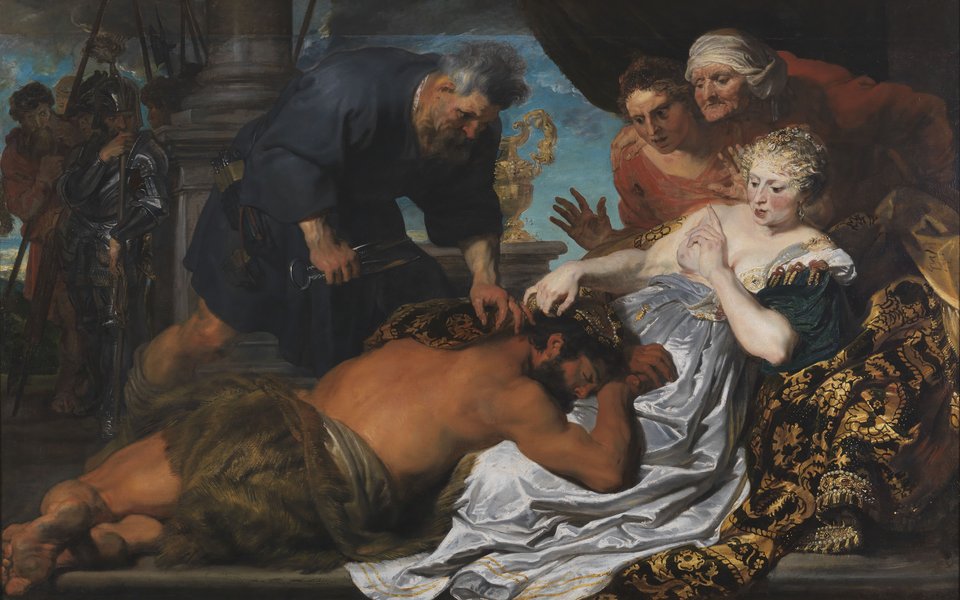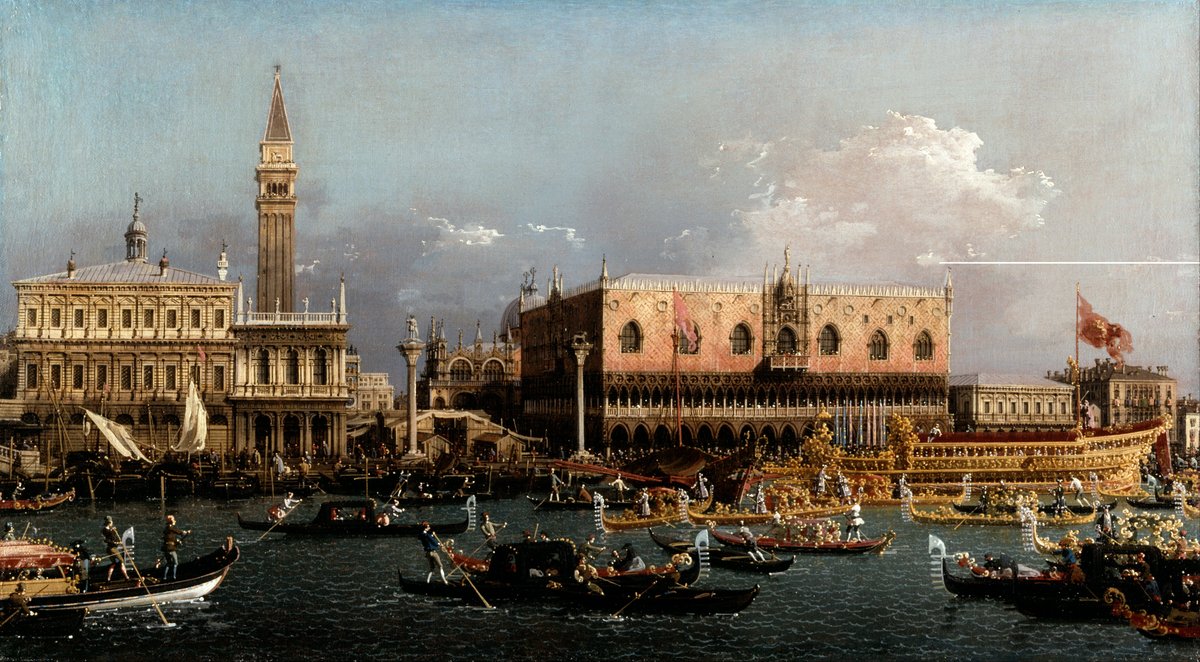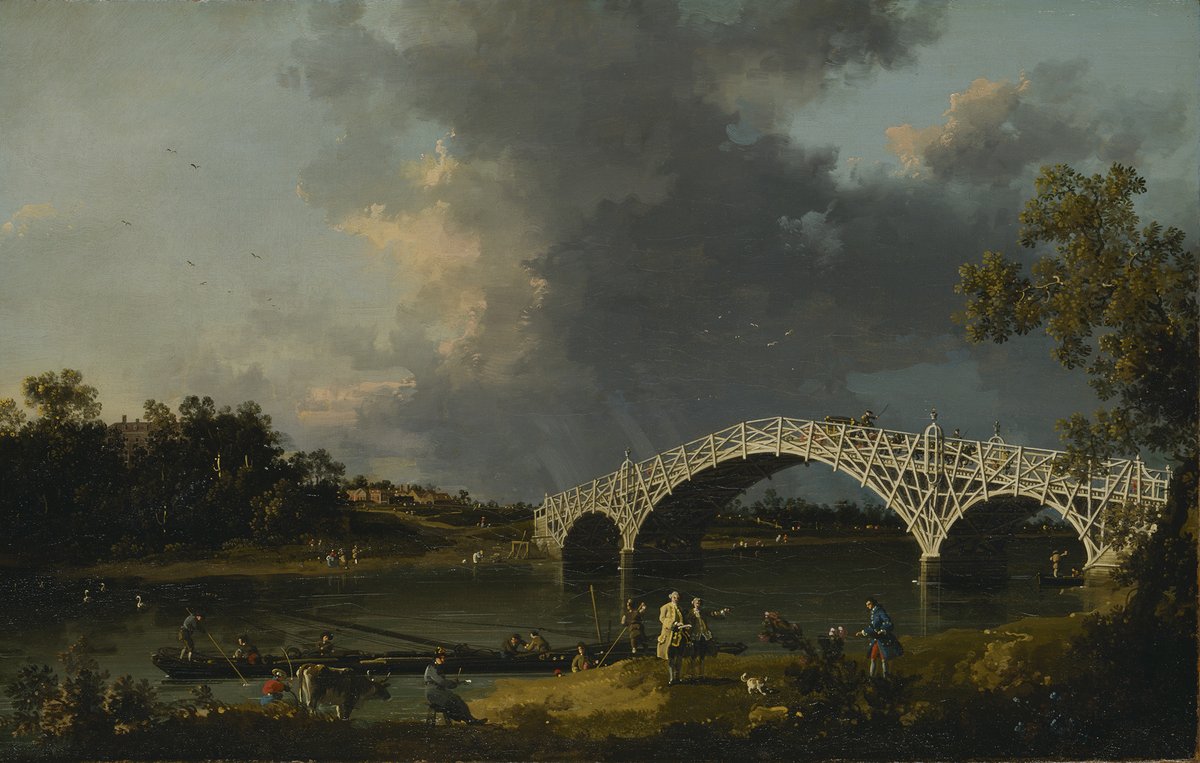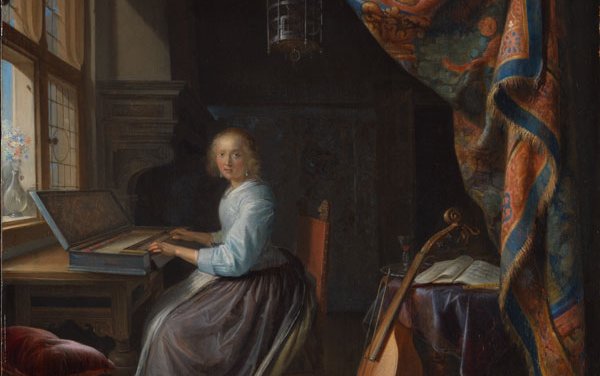Van Dyck's 'Samson and Delilah' uncovered

When you visit Dulwich Picture Gallery, you will find two landscape paintings created by Giovanni Antonio Canal (1697-1768), better known as Canaletto, the 18th century Venetian artist celebrated for his luminous city views.
At first glance, The Bucintoro at the Molo on Ascension Day (1760) and A View of Walton Bridge (1754) might seem to belong to different realms. One sparkles with the golden light of Venice, where crowds gather to watch a grand civic ritual. The other is quieter, set by the River Thames, beneath shifting English skies, where a timber bridge stretches across the water, facilitating everyday connections. When standing in front of A View of Walton Bridge, you catch sight of the Bucintoro through the archway, hanging in the next-door room. The paintings speak to one another - and to us.

The Bucintoro at the Molo on Ascension Day captures Venice at its most theatrical. At the centre is the lavishly gilded Bucintoro, the state barge of the Doge, ruler of the Venetian Republic, gliding across the lagoon in a magnificent public ritual. Every year on Ascension Day - the fourtieth day of Easter, the Doge, the city’s ruler, would sail out into the Adriatic Sea and cast a golden ring into the waves, symbolising Venice’s sacred ‘marriage’ with the water and asserting the Republic’s dominion over trade and naval power. Canaletto captures this civic performance with his signature precision. The crisp, pink façades of the Doge’s Palace and the Library gleam in the sun. Flags flutter. Figures line the quay in waves of movement and colour. The entire scene is alive with ceremony, sound, and spectacle.
But beneath the surface, there’s something more reflective. By the time Canaletto painted this work in 1760, Venice’s political power was waning. The ritual endured, but the city’s former supremacy had already begun to fade. Canaletto’s painting doesn’t just preserve a tradition, it memorialises it. This is Venice not only as a living republic, but as a mythos under threat. Still, the effect is dazzling. Venice is presented as a city that understands the power of image, performance, and place. The water, always central to Venetian identity, becomes a stage. And Canaletto, both participant and observer, transforms the moment into something timeless.

A View of Walton Bridge, painted during Canaletto’s stay in England from 1746 to 1756, offers no gold barges or civic rituals, but is equally carefully staged. At its centre is the newly built Walton Bridge, the first design of its kind in Britain, constructed between 1747 and 1750. Though it would collapse just a few decades later, its elegant span and marvel of engineering became a subject of fascination, an impression enhanced by Canaletto’s painting. Artists such as J.M.W. Turner would later return to this site, painting the rebuilt bridge with a Romantic nostalgia that echoed national pride and offered a poetic view of the Thames.
In Canaletto’s version, the bridge transcends from a mere functional structure into a symbol of progress and Enlightenment ambition, presented with the same clarity and poise he brought to Venetian architecture. While the scene appears informal – with figures strolling, a dog exploring the riverbank and a rider crossing the timber span – it is meticulously composed. The painting depicts an elevated everyday life, imbued with an optimism that mirrors the aspirations of its time. Canaletto even inserts himself into the scene, seated in the lower right corner, sketching quietly. Nearby stands his patron, Thomas Hollis (1720-74), a political philosopher and activist, accompanied by close friends, his servant, and his dog. Unlike the collective anonymity of Venetian crowds, this is a personalised gathering, an idealised image of sociability and exchange.
What connects The Bucintoro at the Molo and A View of Walton Bridge is more than a shared artist. Together, they reveal Canaletto’s cosmopolitan vision: a painter who moved between nations, capturing not just places, but how people imagine and perform civic identity. The juxtaposition invites reflections: What kind of power does a landscape hold? How do artists express national pride or critique it? And what does it mean to stand between cultures, translating one into the language of another?
In an age of shifting identities and global exchange, these paintings feel newly relevant. They remind us that landscapes are never neutral, but imagined, idealised, and retold. So, next time you find yourself at Dulwich Picture Gallery, pause. Let your eyes be guided by Canaletto from Venice to Walton, moving across history, imagination, and the enduring art of seeing.
By Jin Cheng, History of Art Graduate and Placement Student at Dulwich Picture Gallery, July 2025.


